
On the surface, Google uses youthful branding and a young management team to present project a relaxed and friendly attitude. However, behind the scenes, the company operates a very effective data mining enterprise that gathers, exploits, and sells information about users.
Google redefines its discovery and indexing procedures regularly ensure search engine results are relevant to search terms. It also reserves the top slots in a results page for paid entries. The pursuit of relevance has created retargeting, which displays adverts for the products and websites that you have previously browsed on subsequent pages that you visit. In order to accurately allocate those relevant adverts, Google makes sure it tracks everywhere you go and everything you do on the World Wide Web.
Google Ads has made the company rich, and the income from that division has enabled the company to expand into a wide range of services, including email, video delivery, entertainment, GPS systems, and mobile phones.
Even if you decide to never use the Google search engine or any other Google services, such as Gmail, or YouTube, there is a little bit of Google embedded in every website you visit. When a web page loads in your Chrome browser, you will see a whole series of activity messages flashing by at the bottom left of your screen. Standard web pages now include code and references from a lot of other sources and those flashing messages show all of the extra work that included programs and services perform as the page loads.
You will most likely see the name of Google pop up at least twice as a web page loads. This will be for Google Analytics and Google Ads. These two Google services are everywhere and they help track all of your online activities to and ultimately profit Google.
Under normal circumstances, the cybersecurity industry would classify Google’s embedded codes as infected web pages and produce solutions to help people remove Google spyware. However, because Google is a large corporation and not a hacker team in China, these infected websites are regarded as healthy business process delivery mechanisms and the tracking activities of the company are not called spyware.
Google tracks your location through GPS and your device’s IP address. A recent investigation by the Associated Press found that Google tracks its users’ locations even if they disable Location History in their Google account settings. Google apps like Gmail and Search will record your location at various times whenever those apps are open.
If you want to block Google’s tracking and spying activities and prevent the company from making money off the information it logs about you, you are going to have to take action yourself. You will need to stop using Google products and block tracking codes and adverts on the websites you visit.
In this article, we’re going to take a look at the major Google products you can eliminate, and alternatives that you can use to preserve your privacy.
Contents [hide]
- Popular Google products you can replace
- Google Search alternatives
- Gmail alternatives
- Google Chrome alternatives
- YouTube alternatives
- Google Maps alternatives
- Google Drive alternatives
- Google Docs alternatives
- Google Forms alternatives
- Google Keep alternatives
- Google Calendar alternatives
- Google Photos alternatives
- Google Plus alternatives
- Google Voice alternatives
- Other Google products
- Future Google products
Popular Google products you can replace
Here is a list of the Google products you don’t need to use anymore:

|
Google Search |

|
Gmail |

|
Google Chrome |

|
YouTube |

|
Google Maps |

|
Google Drive |

|
Google Docs |

|
Google Forms |

|
Google Keep |

|
Google Calendar |

|
Google Photos |

|
Google Plus |

|
Google Voice |
There are plenty of other businesses that produce similar web services to Google. Let’s take a look at what’s on offer.
Google Search alternatives
Google Search stores information about you. Your activities on the search engine are logged against your IP address. That IP address can be examined at every website and internet service that you visit, so preventing Google from knowing what you are searching for is a good place to start when you want to regain your privacy.
Instead, try these Google search engines alternatives:
- DuckDuckGo
- MetaGer
- Qwant
- Searx
- StartPage
Read more about each option below.
1. DuckDuckGo
DuckDuckGo doesn’t attempt to tailor search engine results to the user’s habits or search history. As such, it makes no attempt to profile visitors to the search engine, and it doesn’t try to gather information about web activities. All users get the same results for a given search term. DuckDuckGo is the default search engine for the Tor browser (see below).
2. MetaGer
MetaGer is a private German search engine that delivers results in other languages, including English. The creator and operator of the system is a non-profit organization, called SUMA-EV. The privacy of users is of primary concern: MetaGer stores no data about site visitors and it makes no attempts to profile users in order to tailor search results. It doesn’t employ tracking codes or engage in selling targeted advertising. MetaGer is an open source project, so anyone can download and audit the code.
SUMA-EV is making strides to compete with Google in other markets than the search engine category. It operates a mapping system that rivals Google Maps (see below). The creators of the MetaGer search engine went to great lengths to enable its users to preserve their privacy and even made a version of the site that can be accessed directly from the Tor project.
3. Qwant
Qwant is a French-based search engine that serves the international community with foreign language implementations, including English. The company does not use tracker codes and makes no attempt to tailor search engine results. The absence of results tailoring means that there is no commercial advantage to the company in gathering user information.
On the downside, Qwant simply recycles Bing results for all of its national implementations, except for France and Germany. The company earns its income from commission on purchases made by searchers who click through to certain sites, such as TripAdvisor and eBay, so be wary if those sites seem to come up a lot in search results.
4. Searx
Searx is a search engine that you can run yourself. It’s code is available on GitHub and is free to use. The main URL to access the service run by Searx itself is searx.me. However, because the code is freely accessible, you are likely to find this search engine on many other websites.
The Searx philosophy prevents the organization from logging the IP addresses of those who visit the site. The search engine does not tailor search results, and has no need to track the activities of web surfers.
5. StartPage
StartPage (previously Ixquick) doesn’t index or categorize websites itself. Instead, it is a proxy to access Google Search safely. StartPage anonymizes Google users so that the search engine cannot profile them. Search queries are presented by the StartPage server and results are delivered to the user on a separate channel, so Google doesn’t have the opportunity to deposit tracker codes or log the user’s IP address. Because of this firewall between Google and the user, StartPage often presents different search results than those that would be delivered to the user directly by Google.
Gmail alternatives
To get the most out of Google services, you first need to open up a Gmail account. Your Gmail address then becomes a username for a lot of other facilities. For example, you can port settings from you Chrome browser across devices if you log in to the browser with your Gmail address and password.
Unfortunately, logging into other services with your Gmail account enables Google to unify the profiles that it keeps on the user base of each of its products and record even more information about you in its tracking database. Entering your Gmail username in other products means that Google doesn’t need to rely on your IP address as an identifier and can trace your activities even when you switch from one device to another.
Recent revelations about sloppy privacy standards at Gmail should make anyone want to stop using this webmail service. It’s a good idea to break the habit of using your Gmail address everywhere, delete your Gmail account, and sign up for one of these Gmail alternatives:
- ProtonMail
- Hushmail
- Mailbox.org
- Runbox
- Tutanota
Most of these services are free to use and all of them offer much better security for your emails than Gmail, as you will read below.
1. Proton Mail
This well-regarded email provider is based in Switzerland. Private users can get a free account which includes 500 MB of storage space. Paid accounts get 5 GB of space in the mail box. Proton Mail offers end-to-end encryption, but this is only really possible to implement if the correspondent is also a Proton Mail user or uses an email system with a compatible encryption methodology.
Another security option for correspondence with non-Proton Mail customers is to send the email recipient a link to a secure page where they can read the text of the mail. One problem with this system is that the sender needs to communicate the decryption key for the secure page via a different communication method, such as a telephone call.
The operators of the mail systems are not able to read emails of customers because all emails are encrypted and the encryption key is protected by a separate layer of encryption.
2. Hushmail
Hushmail is a webmail system that you access through a browser. There is a Hushmail app for iOS devices. Email transmission is protected by the HTTPS system. One problem with standard email is that it is stored in plain text on email servers. However, Hushmail encrypts the contents of emails to keep them private, even when they are at rest on a server. Emails between the company’s customers never leave the Hushmail system. For emails sent to non-Hushmail addresses, the recipient will be sent a link to a secure web page where they can read the message. The contents of the email never leave the Hushmail server.
See also: How to use Hushmail to encrypt your email
3. Mailbox.org
Mailbox.org is based in Germany, but the standard .org website is written in English. You can get a low-cost account with this webmail provider that includes 2GB of mail storage and a 30-day free trial. The mail service is ad-free, doesn’t track user activity, and offers optional PGP encryption for emails. 100 MB of cloud storage is included along with features such as a calendar and task planner app.
4. Runbox
Runbox is based in Norway and offers a range of paid plans that include storage from 1 GB up to 25 GB. It offers a 30-day free trial of its service. The back end processes of the mail system are all open source, so anyone can examine the code. The front end of the mail system is delivered as a webmail service. Runbox does not monitor its users or enter into data sharing agreements with third parties.
5. Tutanota
Tutanota is a secure email system based in Germany and can be accessed through a web browser or through an app for iOS, Android, or Amazon Fire. Private individuals are allowed to use a free version of the mail system, which includes 1 GB of storage space. The Pro version is meant for businesses and that includes 10 GB of storage.
The mail system is protected by AES encryption with a 128-bit key for data, and transmissions are protected by 2048-bit RSA encryption. RSA is the same encryption used for HTTPS and Gmail’s transmission encryption.
The end-to-end encryption is only available when you correspond with someone who also has a Tutanota account. In all other cases, emails are stored on the Tutanota server in an encrypted state, but you can’t control whether any encryption is enforced by the mail systems of your correspondents.
Google Chrome alternatives
Google Chrome is the most widely used browser in the world. Security scares over Microsoft’s Internet Explorer helped Chrome knock the long-time leader off the number one spot, but web surfers didn’t realize that Chrome has more privacy defects than the other leading browsers.
Microsoft replaced Internet Explorer with Microsoft Edge and that browser is very well thought out and has excellent security and privacy features, which is why we’ve included it in on our list of alternatives to Google Chrome. The five browsers that we think you should consider as Google Chrome alternatives are:
- Brave
- Microsoft Edge
- Mozilla Firefox
- Tor
- Ungoogled Chromium
This list of recommendations includes a real mix of well-known corporate rivals to Google and startup minnows that struggle to get noticed in the browser marketplace.
1. Brave
Brave is based on Chromium, the technology behind Google Chrome. This browser blocks trackers, although it does display advertisements to users based on their “anonymized” web activity history. The ads that the browser displays are injected into web pages to replace the ads of targeted systems, such as Google Ads. Basically, Brave includes an ad blocker that is more of an ad replacement system.
2. Microsoft Edge
Microsoft created Edge to address security concerns that the general public had with its Internet Explorer. One standout feature is the ability to open an “InPrivate” window by pressing Control-Shift-P. This mode will delete all records of your session, including cache and cookies, when you close the window.
Despite a lot of security criticisms thrown at Microsoft Edge, the browser has some very solid privacy and security measures — much of its negative press is due to a false association with the discredited Internet Explorer and a general dissatisfaction with Microsoft’s willingness to cooperate with US security agencies. However, the inability to set a preference to ban Edge from loading PDFs in a browser screen is a genuine security flaw.
3. Mozilla Firefox
Like Microsoft’s flagship browser, Mozilla Firefox has recently had a complete overhaul, making it one of the safest browsers available. A root and branch rewrite of Firefox resulted in the Quantum version of the browser, which was released in November 2017. This overhaul improved loading speeds and security. A new feature of the browser is its Tracking Protection utility, which is a welcome addition.
Mozilla, which manages and develops Firefox is a non-profit organization, so if you think that using Microsoft products as an alternative to Chrome is exchanging one corporate behemoth for another, then you should choose Firefox. The Firefox browser is available for Windows, Mac OS X, macOS, Linux, Android, and iOS. If you choose to open a browser window in “private mode,” Firefox will delete all history, cache, and cookies accumulated during the session when you close the window.
4. Tor browser
The Tor browser is based on an earlier version of Mozilla Firefox. This browser offers the only gateway to the Tor network, which is a volunteer-run network of computers that enforces privacy. The system was invented by the US Navy, but is available to the general public for free. Privacy activists strongly recommend Tor.
5. Ungoogled Chromium
Chromium is an open source version of Google Chrome. However, Google still owns that browser system and it can’t stop itself from sticking tracker codes and adware in it. In a way, Chromium is just a way of inviting anyone with time to spare so they can comb through the code and see all the ways that the browser makes money off its users. Ungoogled Chromium seems to offer the best of both worlds.
This browser is available at GitHub, which general consumers may find a little unfriendly. However, this has all of the benefits of Google’s investment in the best technology in the world, while stripping out all of the sneaky tricks that Google slots into Chrome and Chromium in order to recover its costs and then some.
See also: Ultimate guide to Browser Security
YouTube alternatives
Many people don’t realize that YouTube is a Google property. The site delivers free videos that include full TV episodes. The company has extended the brand to YouTube TV which is a premium online video service. The YouTube site is very popular and fairly unique, and dominates its niche market such that it has few rivals. However, you might want to check out these YouTube alternatives:
- BitChute
- Dailymotion
- Hook Tube
- Sling TV
- Vimeo
This list includes substitutes for YouTube itself and for YouTube TV.
1. BitChute
BitChute is a relatively new rival for YouTube, but it has already become the chosen platform for vloggers. Videos on this site mainly fall into the political or history categories, and include postings by conspiracy theorists. If opinion and insight videos are what drew you to YouTube, you will be very happy to switch to BitChute. You don’t have to pay anything for access to videos and they are categorized by general topics or in order of popularity. The platform operates a Peer-2-Peer access model using the BitTorrent protocol, so no central store of videos exists and there is no mechanism in the central manager of the video index to track your video accessing activities. Although members of the service need to give personal information in order to set up an account, non-registered users can access the system completely anonymously.
2. Dailymotion
Dailymotion is majority-owned by broadcasting giant Vivendi, and mobile phone operator, Orange, is a minority partner. Most of the videos are snippets of events or news posted by TV companies that own copyrights of the material. Dailymotion operates a fingerprinting system to check for copyright violation and it does not allow pirated video.
The site requires membership, but you can join for free. Users are able to set up an account through a Facebook profile, but if you are worried about privacy, that would be a bad option. The site records searches and plays made by all members so that it can rank videos by popularity. Dailymotion uses cookies to track your usage of the site, so make sure that you open a private window in your browser before you access the site. That will ensure that all cookies are deleted as soon as you close the windows.
3. HookTube
HookTube lets you keep using YouTube, but blocks that site from gathering any information about you. This domain is just an alternative method to access all of the URLs on YouTube. You simply enter the YouTube address of the video in your browser, but replace the youtube.com part with hooktube.com.
Not only will HookTube block monitoring of your video browsing, but it also breaks through YouTube censorship, which restricts access to some videos from certain locations. As long as the video is still on YouTube, it is accessible through HookTube.
4. Sling TV
Sling TV is in direct competition with YouTube TV. Both are online-only “over-the-top” TV bundles that offer live TV and video on demand. Both emulate the home TV bundles that you can get through cable or dish services.
You can watch Sling TV on your computer or mobile device, or channel it to your home TV through Roku, through any Android TV box, or via a casting device from your computer. Basically, Sling TV can deliver everything that YouTube TV can.
You need to set up a paid account for Sling TV which means that you need to give personal information and bank account details to access the system and platform also keeps track of what you watched in order to make recommendations in a similar manner to Netflix. You can log into Sling TV through a social media account, but if you want to preserve your privacy, you need to avoid this option. Reviews and likes can also be posted to your social media profiles. However, you should make sure not to activate this feature if you want to keep your activities private.
5. Vimeo
YouTube was originally intended as a space for original content, but it soon became crowded with videos uploaded by broadcasting corporations and pirated copies of movies and shows from mainstream entertainment providers. Vimeo still sticks to its goal of hosting original content. The aim of the site is to feature short films and movies that are uploaded by their creators. Vimeo helps media professionals showcase their skills and it can also be used as a repository of promotional videos and product guides.
Although the lack of pirated videos might make Vimeo seem less attractive as an alternative to YouTube, it pulls in a large following. The website passed the 100 million visitors a month mark at the end of 2013 and keeps growing. It is currently ranked by Alexa as the 131st most visited website in the world. Although people are expected to pay in order to upload videos to the site, there is a basic plan which is free and includes 500 MB of disk space.
You need to set up an account in order to use Vimeo and that requires a certain amount of personal information to be disclosed. The only tracking information you need in order to create a free account is a contactable email address, but you can set up a burner webmail account for this purpose. Vimeo does log your video views and also records your IP address on each visit. The company will comply with any court orders for logged information, but you could cover your tracks by using a VPN when connecting to the system.
Google Maps alternatives
Google Maps can show you your current location and give you directions to a destination, including turn-by-turn audio instructions to get there. This essentially gives you a full GPS system for free. Plus, Google Maps has additional features such as providing satellite and street view images of a chosen location.
Of course, the ability to constantly track your location has some privacy implications. Turning off the location services on your devices goes a long way in preventing Google from learning about your location. However, that action doesn’t stop Google Maps knowing where you are, because it can still derive your location from your IP address.
Plus, disabling the location services on your computer cripples the useful location features of Google Maps. So, it’s a compromise.
If you want to delete the Google Maps app from your device entirely and use some other service, you could try one of these Google Maps alternatives:
- OpenStreetMap
- Mappy
- Mapquest
- Here WeGo
- MetaGer Maps
These map services can be accessed through a browser or a mobile app.
1. OpenStreetMap
OpenStreetMap is an open source project. That means the program code is available for anyone to read. If you are not happy with elements in the code you can change it and then compile your own version of the facility. OpenStreetMap is an online mapping service, and its code is widely used by other mapping services.
The core version of OpenStreetMap is available to run on Windows PCs. However, many people have created other versions, so it’s now available for a range of platforms in different guises. For example, OsmAnd is a free version of OpenStreeMap written for iOS and Android devices. Maps (F Droid) is another application that uses OpenStreetMap mapping data and MapHub is a customized front end to the OpenStreetMap database.
You don’t have to create an account to use OpenStreetMap online and, although there is a GPS function that needs to access your location, you can preserve your privacy by not using this function and keeping your location private.
2. Mappy
Mappy is a great little map tool that doesn’t attempt to probe your computer for your location. The site does use cookies however, so open it in a private window. The web service is accessible through a browser on computers and there are apps for mobile devices. Maps don’t give you a satellite view, but the facilities of the site do extend to driving directions.
3. MapQuest
MapQuest is the closest rival to Google Maps in terms of market share. This mapping service has very old roots because it was developed by a cartographic services business that was founded in 1967. The online version was launched in 1996. After being bought up by AOL, the service is now owned by Verizon.
Mapquest will try to detect your location when you open the site. However, you are asked to give permission for this disclosure, so you have the option to block it. The site does use cookies and the map page is plastered with adverts. A row of buttons at the top of the page enables you to select services you want to see on the map, such as gas stations or grocery stores.
4. HERE
HERE uses cookies, but you can choose to limit the type of cookies that get copied onto your computer. The categories available are “site improvement” and “personalization.” However, if you open the site in a private window, those cookies will be deleted when you close down the window.
The map system does include location detection. However, this is available on demand, so if you don’t press the location button, the website won’t attempt to request your location. The site will ask you to allow it to access to your location. If you have location services turned off, the request won’t be answered and the website doesn’t seem to have any capabilities to wake location services up.
HERE offers map views and satellite views of the world down to street level. You can ask to view current traffic patterns and movements on public transport routes. You can also get driving directions. This system pretty much does everything that Google Maps does. The site can be accessed through a browser and is also available as an app for Android and iOS devices.
5. MetaGer Maps
MetaGer Maps is a mapping service run by the company that owns MetaGer Search, which you read about above. This system is based on the OpenStreetMap platform. The map service can be accessed through a browser on a computer or through an app for Android devices.
The system will ask you for permission to access the location services on your computer or phone, but you have the option to block it. If you allow the location to be revealed to MetaGer, the map service can be used as a GPS. MetaGer is adamant that it does not store any data on its users. Some of the text on the map screen is only available in German.
Google Drive alternatives
The ease of access to Google Drive through the Apps menu in the Google Search web page makes this a very popular tool, especially as it’s free. However, the system is not very secure, plus it leaves you exposed to Google data gathering. Now, Google hopefully won’t break into your Drive and read your documents. But the metadata stored about your activities, such as frequency of access and data transfers, are facts that the company is legitimately allowed to compile about you. You might consider looking into these Google Drive alternatives:
- Dropbox
- Nextcloud
- Sync.com
- TeamDrive
- Tresorit
This list covers a wide range of online storage solutions for the consumer market. It may surprise you to see Dropbox on this list. However, not everyone who wants to remove Google from their lives is completely anti-consumerism. Plus, Dropbox isn’t part of a large conglomerate, but is an independent company.
1. Dropbox
Dropbox has been an innovator in the consumer cloud storage market and pretty much single-handedly created this genre of online services. Individual users can use the system for free but with a storage space limit of 1 GB. To get more space, you need to pay. The company has experienced some security glitches in the past but that hasn’t stopped this innovative service growing from a tech startup run by two MIT students in 2009 to a company serving 500 million users in 2016.
With Dropbox, you get a folder integrated into your computer file system. Any file copied to that folder gets backed up on the cloud at the Dropbox server. When you travel, you can access to your folder on the Dropbox website through a browser. Or you can install Dropbox onto another computer or mobile device for easy access.
2. Nextcloud
If you want to get away from corporate cloud storage providers completely, you could set up your own. Nextcloud is an open source software that lets you create a file server. With this, you don’t need to transfer your files from your home computer to your laptop or mobile devices in order to access them when you go out. Instead, you connect to your home computer from your mobile devices and access your files online. This setup also allows you to grant other people access to your files. One problem with self-hosting solutions is that you will be responsible for system and transfer security and that is a complicated topic to master.
3. Sync
Canadian-based Sync is a hosted cloud storage service that includes strong encryption, both for transmission and for storage. The company offers free storage to members of the public and charges for a corporate data backup service. The system allows file sharing via secure links and it can be used by companies for team collaboration. All transfers are covered by end-to-end encryption which prevents intermediate intruders from cracking the encryption.
4. Synqion
Synqion was previously known as TeamDrive. The selling point of this cloud storage service is that it can be used to enable teams to collaborate. The premise is that teams should store documents centrally so everyone has access to update them, making each finished document or presentation a team effort. The system works in a similar format to Dropbox. However, rather than just making your backed up directory available to yourself on other devices, you let other people access the folder as well.
All file transfers are covered by end-to-end encryption. Files are also encrypted on the server with a zero-knowledge system. That prevents the employees of Synqion getting access to your files and it also protects them, should a hacker break into the Synqion system.
5. Tresorit
Tresorit is a cloud backup service based in Switzerland. The system employs end-to-end encryption for all file transfers and file storage is protected by a zero-knowledge encryption methodology. That means that no one in the company is able to trace the encryption key that protects your files.
Tresorit uses the same system as Dropbox in that your backed up files are visible in a special directory in your file manager. All file transfers are covered by end-to-end encryption and the staff of Tresorit are not able to access the encryption keys that keep your files private when on the company’s server.
This service isn’t free. There are three levels of service, which are Personal, Business, and Enterprise. You can get a free trial before paying for the service.
Google Docs alternatives
Microsoft 365 is the big hitter in the online productivity software market. However, Microsoft Corporation has been caught out cooperating secretly with US security services, so they are not the best providers to run to if you want a service that will honor your privacy.
When we talk about Google Docs, we include Google Sheets and Google Slides, so we mean the whole productivity suite, not just the word processor. Here some other options as alternatives to Google Docs:
- CryptPad
- LibreOffice
- Nuclino
- OnlyOffice
- Zoho Docs
There are actually many more solid alternatives to Google Docs. However, for brevity, we have limited this list to just five providers.
1. CryptPad
CryptPad offers free accounts. You don’t even need to sign up for the service because you can use it anonymously. The CryptPad website offers a range of document formats, which include a “rich text” word processor, a presentation slide creation utility, a markup language editor, and a creator for Kanban cards in manufacturing. If you don’t create an account, the website still enables you to access previous files because it saves them on your computer.
If you sign up for a free account you get 50 MB of storage on the CryptPad server, which isn’t much. Paid accounts get 5 GB, 20 GB, or 50 GB, depending on the plan. File transfers are all covered by encryption and stored files are encrypted with keys that only the customer can access.
2. LibreOffice
LibreOffice is free and available for Windows, Mac OS X, macOS, Android, iOS, and Linux. This is open source software and is based on the OpenOffice.org package that was originally made available for free by Sun Microsystems. The original OpenOffice is now in the hands of the Apache organization. Apache can’t find enough volunteers to work on that suite of programs, and so it is no longer maintained and has security issues.
As the code was available to all, The Document Foundation took a copy and transformed it into LibreOffice. So this is the new heir to OpenOffice. The Document Foundation is a non-profit organization, so this productivity suite would please you if you are hostile to large corporations.
A big difference between Google Docs and this productivity suite is that LibreOffice is not available as a cloud service. You have to download the executables for the suite and run them on your computer.
3. Nuclino
Nuclino bills itself as a knowledge base creation system. You don’t have to limit your use to just creating a knowledge base for a website, because Nuclino is using that term in a generalized sense, as in “a central store of shared documents.” As the concept here is more about document creation than storage, the service provides document and presentation creation software, which can be accessed simultaneously be team members from anywhere in the world.
You can access the online service through desktop apps for Windows, Mac OS X, macOS, and Linux and there are mobile apps available for Android and iOS devices. The system integrates user authentication, which locks out snoopers. You can set different levels of access rights to documents to enable some team members to just be able to view a document and not change it.
4. OnlyOffice
OnlyOffice has a lot of features in common with Google Docs. You can open files created by Microsoft Office elements and you can work either online or offline. The file transfers are covered by encryption. OnlyOffice doesn’t offer any storage for documents, but you can link the service to your Dropbox, OneDrive, OwnCloud, Google Drive, NextCloud, or Yandex.Disk account and store your documents there. OnlyOffice is completely free of charge. You can access the document creation software through a browser or by using an app for Android or iOS.
5. Zoho Docs
Zoho has a lot of useful products and its online productivity suite to rival Google Docs is called Zoho Docs. The suite also includes file sharing and document storage, so it matches the Google Docs almost facilities exactly. Zoho Docs integrates two-factor authentication for document access in the Cloud and transfers are protected by encryption.
Zoho complies with the EU-US Privacy Shield Framework to protect the privacy of users. The system can be used by individuals or groups. Document sharing s implemented through secure links, which you email out to collaborators.
Google Forms alternatives
Google Forms are becoming very popular in the HR sector. Companies use the system for online application forms, aptitude tests, and more. Google Forms can also be useful for work checklists, customer satisfaction questionnaires, and for data gathering.
If you want to go completely Google-free there are many excellent alternatives to Google Forms:
- JotForm
- 123 Form Builder
- Formstack
- Typeform
- Formsite
The online forms market is surprisingly well-supplied and you will probably find other very competent services that rival Google Forms. However, these are the five that we recommend.
1. JotForm
JotForm is a free service that enables you to build forms online. The JotForm website also hosts your forms so that you can make them accessible to your target audience and gather responses. JotForm emails those responses to you rather than storing them, so you will need a separate application to collate and analyze the data that you collect through the forms.
The JotForms server is secure, but emails will only be protected by HTTPS in transit and they won’t be protected at the mail server if you use a standard email service. You can tighten up your email security by implementing one of our suggestions for Gmail alternatives.
2. 123 Form Builder
123 Form Builder isn’t free but it has a lot of features, to the point that you could run an entire online business off it. The form builder itself is able to create standard order forms, contact forms, and any other type of form that you might need. Those forms can be embedded into emails for distribution, or you can make them available on web pages.
123 Form Builder’s system will store responses and its data management utility includes analytical tools. You can integrate the form builder into other applications, such as Salesforce and MailChimp. The system can be linked to payment collection services, including PayPal and Stripe.
3. Formstack
You can integrate Formstack with Salesforce, MailChimp, and PayPal to make your forms the driving interface for your business. This is a paid service, but you can get a 14-day free trial. The forms can be embedded in your own website, in emails, or on social media pages.
Security is provided by encryption both on the site, in transit, and in storage. You can opt to have your forms hosted by Formstack, in which case, the system’s security measures are of primary importance. If you host the forms on your own site or embed them in emails, then the security aspect of your work is in your own hands.
4. Typeform
Typeform is a hosted form solution that can help you build everything from a questionnaire to an online store. The system is very visual and has a lot of graphical capabilities to make your forms attractive and fun. You can integrate animation and even videos into forms, which means that you could even use this platform to produce training courses or installation troubleshooting guides. The control console includes some fundamental analysis tools that can be utilized to examine the responses that Typeform will store for you.
There are both free and paid versions of this service. Companies that use the Typeform form building service include Airbnb, Uber, and Nike, so as a Typeform user, you are in very good company. However, a recent data breach in May and June 2018 may make you cautious about using this service until the company gets its server security problems sorted out.
5. Formsite
Formsite is a market leader in online form creation and has been in the business a lot longer than Google. The service started up in 1999 and now has more than 500 million forms under its belt. The company will host forms and collect responses. Forms for emails can also be generated by the online service.
The Formsite service is available in a number of plan levels and there is even an ad-supported free version. The user console includes access to stored responses, which can be analyzed using built-in tools or exported. Data storage is protected by encryption and access to forms can be limited by user authentication. There have been no reported security breaches at Formsite in its long operating history.
Google Keep alternatives
Google Keep is a note-jotting app that includes a speech transcribing feature. This is a replacement for Google Notebook, which was merged into Google Docs in 2012, losing much of its rapid note-taking facilities. If you want to go completely Google-free, you can take a look at these Google Keep alternatives:
- Awesome Note
- Evernote
- Joplin
- Moleskine Journal
- Standard Notes
These apps are all free and offer improvements over the functionality of Google Keep.
1. Awesome Note
The Awesome Notes package is designed to work on iOS devices, including Apple Watch. You can sync your notes in iCloud to make them available across devices. The transfers between your devices and iCloud are protected by encryption. Access to the app and its contents on your device is controlled by the iOS platform physical authentication system, Touch ID.
Notes are categorized into folders that include diary entries and calendar schedules, so this app will substitute for Google Calendar as well. Awesome Note can also integrate voice, video, and photos.
2. Evernote
Evernote gives personal users a free account, but businesses have to pay to use the service. This is an industry leader and other note-keeping apps actually just add a front end to the Evernote system.
The company is very keen to explain to the public how it will protect their privacy. So, it has created a manifesto, called The Three Laws of Data Protection. Those laws are: Your Data is Yours, Your Data is Protected, and Your Data is Portable.
To summarize this philosophy, all you need to know is that the company does contract in services to provide support to customers, but contracts prevent third parties from storing customer data and selling it on. While Evernote will not sell your data, it will analyze your activity in order to deliver certain features, such as search results and “popular features” recommendations.
Both data transfer and storage are protected by encryption and the Evernote security system integrates two -factor authentication.
3. Joplin
Joplin is compatible with Evernote, and files created with Evernote can be imported into Joplin. Within Joplin, notes are kept in markdown format and each note is filed as part of a notebook, which acts as a categorization and directory structure. This is an open source program, so you can comb through the code to be sure that there are no hidden tracking libraries that the application is not compromising your privacy when you use it.
The Joplin application is available for Windows, Mac OS X, macOS, Android, iOS, and Linux operating systems. The saved files from Joplin go straight into the directory system of your device, but you can choose instead to attach a file storage account to the application and save files there. Joplin doesn’t supply cloud storage space, so the security that protects transfers of files from your device to the cloud server is dictated by the storage provider.
4. Moleskine Journal
Moleskine is an Italian brand of notepads and stationery that is very high quality and appeals to the design-conscious consumer. The company now also provides free apps for the iOS operating system that integrate the brand’s style. Among the range of Moleskine apps, you will find Journal, which is a note taking and sketchpad app. This utility is also available for Android devices through Google Play.
The app is compatible with Apple pencil, so you can draw directly onto the screen of your mobile device. The company sells templates and journal types to help you order your notes. This is a very stylish notepad application that offers status and artistic merit that way exceeds the services that you get from Google Keep.
As the company is based in Europe, Moleskine implements the General Data Protection Regulation (GDPR) which protects your personal information from disclosure to third parties. The company doesn’t claim ownership to the data you store in your account and it have access to the contents of your account because they are encrypted.
5. Standard Notes
Standard Notes is a note-taking application that has integrated encryption. The system is available for Windows, Mac OS X, macOS, Android, iOS, and Linux devices and it can also be accessed as a service on the Standard Notes website through an extension for Google Chrome.
Notes are categorized by type, so you when you create a new note, you first select a template, which will get that note stored in a category. Types of notes include todo list entries, food-related notes and recipes, drawings, essays, journal entries, and blog posts. Notes can be synced across all of your devices.
File transfers are protected by end-to-end encryption. Both storage and transfers are covered by AES encryption with a 256-bit key. This service is free but a paid upgrade adds on two-factor authentication and the ability to sync to email and a cloud storage service of your choice.
Related: Encryption Resources: A Big List of Tools and Guides
Google Calendar alternatives
Google Calendar was launched in 2006 as a standalone online service. It can be accessed over the web through a browser, or with an app for Android and iOS. A problem with Google Calendar lies in its connections with Gmail. A link between Gmail and Google Calendar searches through your emails and identifies appointment arrangements. These are then automatically added to your calendar.
As we highlighted in the Gmail section above, Google has been caught out rifling through the contents of users’ emails. So an automated information gathering process to identify your appointments may not necessarily be solely for your benefit. We have identified some of the better calendar apps available today. These are some top Google Calendar alternatives:
- aCalendar
- Etar
- Fruxx
- Moleskine Actions
- Penultimate
Each of these services can be used for free. Some have paid versions with improved facilities.
1. aCalendar
aCalendar from TAPIRapps is a calendar application with privacy features. The main screen of the application is a classic calendar layout. Clicking on a date produces a detailed screen for the diary of the day. Once you schedule events, you can share the details of meetings, such as time, location, and attendees, with others through NCR or QR barcodes.
The calendar automatically includes markers for public holidays and school holidays. Other facilities in aCalendar include a contact database, which you can link to the events that you schedule in the calendar. TAPIRapps does not collect, store, or sell any personal information.
2. Etar
Etar is a calendar system that integrates security and privacy features. The code for the utility is open source, so you can read through it to assure yourself that there are no sneaky monitoring routines inside. This app is only available for Android. You can tap through the calendar to see months or weeks. After that you can drill down to a day view or see tasks that carry on over several days, weeks, or months.
Don’t worry about the possibility of ads, trackers, or data harvesting with this app. The application exploits the facilities of Android Calendar, so this is essentially an add-on to that native Android app.
3. Fruxx
Fruxx is an attractive calendar system that you can use for free. The app installs on Windows, Mac OS X, macOS, Android, iOS, Linux, Blackberry, and Sailfish operating systems. The service can also be accessed on the web. Information stored in Fruxx can be synchronized across devices over the internet. You can share calendars among a team and send a secure link to an individual if you want that person to access a specific task card. These features mean that Fruxx can be used as a project management tool.
The main service of Fruxx is a standard calendar. You can mark events, including those that stretch across days, such as conferences, training courses, and vacations. A second element of the calendar is a task list. Each task has a card where you can detail the task, its timeline, and progress. The final feature of Fruxx is a contacts database.
Fruxx isn’t quite as good for privacy as the other calendar systems in this list because its code isn’t open source. Plus the terms of service for Fruxx allow the company to collect personal information on customers, and even calendar content.
4. Moleskine Actions
Back to Italian stationers Moleskine for another free app that has taste and style embedded in its design. Actions is only available for iOS devices. This scheduling system emulates the layout of Moleskine’s classic printed diaries. You write forthcoming events in Actions and you can schedule them to appear regularly in your diary. The Actions app integrates with another Moleskine service for iOS, Timepage. Combining the two, you get a full replacement for Google Calendar.
5. Penultimate
Penultimate is a system designed for iOS devices that allows you to write handwritten notes on your device. This tool uses the Evernote platform, so it can be integrated with Evernote to provide more features. The basic Penultimate service is free and there are two subscription options. Syncing across devices is possible if you also have an Evernote account.
The protection of files when in transit is provided by the Evernote system. As this system enables you to write in freehand, it also offers a method to include drawings into notes.
The writing system requires a hardware component, which is the Jot Script Evernote Edition Stylus. You can use color in your notes and the system comes with a number of templates and default backgrounds, You can also import your own templates to create office forms or personalized electronic stationery.
Google Photos alternatives
Google Photos was devised as part of Google Plus. It was separated out into a new independent service in 2015. The service is free and it gives users unlimited storage for photos and videos. The photos can be up to 16 megapixels in detail and videos can have a resolution up to 1080p. Google Photos is available online through a browser or through an app for iOS and Android.
Google Photos isn’t a very well-known service, which means that the market for photo galleries and storage hasn’t been crushed by the dominance of one Google product. Here are the Google Photos alternatives we recommend:
- Adobe Bridge
- Cluster
- Ever
- Piwigo
- Shoebox
All of these alternatives have great features that help you to organize your photos and videos and share them.
1. Adobe Bridge
Adobe’s photo management system is aimed at companies rather than private individuals. Its purpose is to assist graphic designers assemble presentations that can be generated into PDFs. The system helps you organize and standardize images, so that they all have the same resolution and color scale. You can get the system to generate thumbnails and titles for you, which makes pictures easier to store in galleries. If you want to display your pictures online so that others can see them, you will also need to sign up for Adobe Portfolio.
Adobe Bridge is a desktop application that is available for free for Windows, Mac OS X, and macOS operating systems. Features include file transfer management when downloading from a camera and digital watermarking.
2. Cluster
Cluster is available online through a web browser or can be accessed through an app for Android and iOS. This free service attempts to cover a social media function as well as a gallery service. You organize your photos into albums and then you can invite others to view the album, or add to them.
Photos from all of your albums and the albums to which you are invited contribute to your photo stream. Like Facebook and Instagram, Cluster allows visitors to an album to comment on photos.
This service enables you to control who has access to your photos. Cluster stores the personal information that you knowingly give the company when you register. It will also record your visits to the site, logging this information against your account and IP address. The company admits that it will share the information gathered on members, but only in an aggregated format, so they won’t sell or share information that can be traced back to you.
3. Ever
Ever is a free photo sharing system that can be accessed through a desktop program for Windows, Mac OS X, and macOS. There are also apps for Android and iOS. The company depicts itself as a photo backup service. However, it also includes photo management functions and enables users to share photos in a manner similar to social media. This service is free and there is no limit to the amount of cloud storage you can use for your photos.
One really useful feature that Google Photos has is that it recognizes the types of photos that you upload, such as travel or people, and categorizes them accordingly. Ever has a similar feature. The service also includes a search facility, which enables you to view photos by theme or date, rather than just by album.
A digital magazine format within the service enables you to assemble collections into albums that look like physical photo albums. This is called Ever Books. However, that feature is not free.
The paid version of Ever is called Ever Plus and it includes a lot of other enhancements, including the ability to order prints of your photos in your Ever account. All transfers and storage are protected by encryption and the company keeps multiple copies of content on different servers to protect against loss through hardware failure. Ever doesn’t include functions for video storage.
4. Piwigo
This is a free, open source online photo platform that you can use on the Piwigo website, or host yourself. You access the service through a browser on your computer or with an app for iOS. The mobile app is able to connect to your camera, so you can upload new photos directly on the Piwigo server and prevent your scarce device memory from filling up.
You can set up an account for yourself, for a group, or for a company. Albums can be shared by invitation, or kept private. Only those people who you invite will be able to see your photos on Piwigo.
The service includes a template of layouts that enables you to present your photos in unique ways. Some layouts have text fields, so you can even use the service to assemble your own online magazine. Piwigo will automatically generate metadata for the photos that you upload. File transfers and storage are protected by encryption and user authentication.
5. Shoebox
You get unlimited photo storage with Shoebox and the service is free. Although it is an online service, you access it through a special interface rather than through your browser. The app is available for Windows, Mac OS X, macOS, Android, and iOS. There are both free and paid versions of the Shoebox service.
You can store videos in Shoebox, but they aren’t as well managed as they would be in the Google service. You are limited by Shoebox to only uploading videos that are a maximum of 3 minutes in length and your total storage allowance amounts to 15 minutes of video.
Both transfers and storage on Shoebox are protected by encryption and multi-server backups. You can allow access to your photos to invited friends and family. The company makes no claims of ownership over the content that members upload to their accounts.
Google Plus alternatives
Google Plus entered the social media market a little late and never managed to make a dent in the Facebook’s dominance. Later entrants into the field, such as Instagram and Pinterest have had more success in carving out a niche than Google Plus could muster.
The probability is that you don’t use Google Plus now anyway, and you most likely have a Facebook or Instagram account, or you avoid social media completely. When it comes to privacy, the latter option is probably the best strategy. The big hitters in the social media market have been exposed as data miners, who managed to lure in the general public to enter data into a well-presented and all-encompassing marketing survey tool.
There are some interesting minnow social media platforms on the web that cater to niche groups and one of those might provide you with the online social interaction that you have been looking for. Consider these Google Plus alternatives:
- Diaspora
- Mastodon
- Minds
- Movim
- Steemit
Each of these platforms has a specialist twist that will prevent them from appealing to the general public. So the owners and operators of these tools will never expect to become rivals to Facebook. This lack of ambition to dominate the world removes the need to monitor activity and harvest data. This means you should be able to enjoy using these Google Plus alternatives without loss of privacy.
1. Diaspora
Diaspora makes its position on privacy very clear: you own your own data. This is a refreshing change to systems such as Facebook, which bury in their Terms of Service their ownership of everything you post on their systems.
The Diaspora architecture spreads the service across a network of servers all over the world. On the face of it, you might think that this would limit your contacts to just those other users registered on the same server. However, the distributed servers are linked together and Diaspora members can contact each other no matter where their home server is.
This spreading of users across the world with allocations to different servers has a performance benefit and also creates a security firebreak. Most people tend to communicate with people in their own area, while having some friends in far flung places, so those communications with nearby friends should be faster under the Diaspora system.
If a hacker manages to break into the underlying operating system of a membership server, he would gain access to everyone’s data. With the Diaspora architecture, should all other security measures fail, the number of members that could get their data stolen is reduced. You can post to Facebook, Twitter, and Tumblr through Diaspora. Membership is free and you can even host the platform on your own server.
2. Mastodon
Mastodon was designed as a self-hosted social media platform, so this solution is ideal if you want to set up your own community, such as for a club or a business. A member of the public can set up a server, or apply to join one set up by some other private individual.
Mastodon communities can interconnect, so if you are not a company or a group, you would install the hosting software on your computer and then use that to connect through to other individual members of the system. By this method, you join a system that looks very much like a Peer-2-Peer network.
As there is no organization centrally managing the Mastodon system, there is no one accumulating rights to the data that you post on the platform. The server software is open source, so you can check through it for data gathering mechanisms.
3. Minds
Minds is a decentralized social media platform, which makes it a lot like the previous two options on this list. However, Minds has a cryptocurrency edge to it. You earn crypto tokens by contributing to the system. Those contributions might be operational services, such as hosting a server, or content contributions.
The Minds platform is open source, so it can be copied by anyone and installed on a host without anyone’s permission. This open philosophy makes it almost impossible for the organizers of Minds to harvest data for marketing purposes in the way that Google and Facebook love to do. If you’re into cryptocurrency, this model might really interest you. The only problem is that you can only use those tokens within the Minds system. Data transfers are protected by end-to-end encryption.
4. Movim
Movim is another distributed platform. The regularity with which the distributed architecture is employed by privacy-minded social media systems shows that this is probably the way forward for social media platforms. Movim is an open source system, which enables anyone to view the code, and to set up the software on their own host. Movim makes it clear that it’s not interested in collecting or selling user data.
The name “Movim” is actually an abbreviation of “My Open Virtual Identity Manager.” The underlying technology is the XMPP chat protocol, which is also known as “Jabber.” You can use any XMPP client in order to connect to the Movim community. If you don’t have an XMPP client already, Movim provides an interface to the system.
Essentially, Movim is an expansion of a chat facility to include social media features. Anyone can set up a Movim host, so the central organizers of the system have no access to any member’s personal data.
5. Steemit
Steemit is an increasingly successful social media platform that uses the cryptocurrency model. A pool of credits is made available each day and that is shared among those who made contributions to the service that day. Those who contribute more get a larger slice of the pie. You don’t need to work as a technician or write articles for the platform in order to gain tokens. Some sections of the site award you points for just visiting, or for voting on content.
This platform is more of interest to writers because it aims to produce current news articles and technical advice pieces that will help and inform the cryptocurrency community. Writers are often expected to promote their own work on social media. So the Steemit concept truncates this working practice and hosts the writer’s work as well as providing a channel for attracting an audience. The contributors to Steemit retain ownership of their work and their personal data. No one gathers the data of Steemit members for resale.
Related:
How your identity can be stolen using social media
1 in 5 Twitter users say they’ll quit within a year
Google Voice alternatives
Google Voice is a telephone service run by Google that is only available in the United States and Canada. It differs from other chat apps because it enables you to make calls out onto the public telephone network, rather than just contacting other chat app users on the computer. The service allocates you a telephone number so you can also receive incoming calls. Those incoming calls get forwarded to a nominated phone number. You can only forward calls to US or Canadian telephone numbers.
Customers can make free PC-to-phone calls within the United States and Canada and free PC-to-PC calls anywhere in the world to users of Google Hangouts. You need a Gmail account in order to use the service and you also have to set up a payment method because not all calls are free.
There are many VoIP services available on the market today and a lot of them offer free calls under certain circumstances. The industry leader in the market that Google is aiming for with Google Voice is Skype. However, we do not recommend that service to those seeking to improve their privacy. The Skype interface enables others to discover your IP address, which can expose you to DDoS attacks and activity monitoring.
The security service revelations exposed by NSA whistleblower, Edward Snowden, in 2013 explained that Skype’s encryption system has a backdoor in it. The company frequently cooperates with the NSA, enabling data sharing and wiretapping of customer communications.
The apps we do recommend for secure communications are the following Google Voice alternatives:
- Facebook Messenger
- JMP
- Signal
- Telegram
The Google Voice replacements here are mainly secure chat apps that integrate voice and video chat. So, they don’t exactly model Google Voice because, other than JMP, they don’t give you a telephone number to receive incoming calls from the real world. However, so many members of the public are now users of chat services that it should be possible to find a combination of apps that cover all of the people you want to contact. Regular telephones are not secure, so if you seek a system that protects your privacy, switching over to secure chat apps with voice features is your best bet.
1. Facebook Messenger
Although it would be nice to avoid all corporate giants, you can safely use Facebook Messenger because the people that run the service are not able to break through the encryption that they provide. Facebook Messenger began as a utility in the main Facebook page, but it is now a standalone web service, so you can use it without having to go into Facebook.
The directors of Facebook faced the risk of going to jail, thanks to an action brought against one of its divisions in Brazil (see WhatsApp below). However, they refused to dilute their service’s security and privacy measures and Facebook earned merit in this regard.
Facebook Messenger now has the same level of security as WhatsApp and that got the whole corporation into trouble with the courts. It uses the Signal protocol to protect messages. The only problem with the Facebook Messenger implementation of Signal’s security measures is that its users have to be aware of their existence and actually turn them on. This is done using the “secret conversations” feature.
Although it is a text-based chat service, Messenger also includes voice and video chat facilities. You can even use a split screen format to speak to a group of people, each contributing from a different location.
2. JMP
The JMP system uses a computer-based chat protocol, called XMPP, or “Jabber.” JMP makes XMPP available for delivery to mobile phones as SMS messages. The system can carry both text and pictures. When you sign up to JMP, the company allocates you a US telephone number. This is the identifier by which your messages are carried out from your computer and onto the phone network. The telephone number also enables you to receive text messages back.
The company charges for this service, but the cost is a nominal amount. You are also able to make voice calls from your computer to a phone with your allocated telephone number. The subscription for the service is very cheap and it allows you to send and receive unlimited SMS messages. The plan also includes 120 minutes of voice calls per month. You can get the service on a 30-day free trial, during which time your voice call allowance is limited to 30 minutes.
You can only call or send messages to numbers in the USA or Canada. Calls and texts on the public telephone network are no more secure than the calls and texts that you make from your own phone. The JMP software is open source, so you can read through it to make sure that there aren’t any data gathering procedures in there. You can choose your own chat client and connect it to the JMP network.
3. Signal
Signal was created by Open Whisper Systems. This organization planned the Signal product as a secure chat utility. It then entered into an agreement with WhatsApp to allow that rival to integrate Signal security systems. Those security measures are now also included in Facebook Messenger. The end-to-end encryption that protects chat sessions creates a very strong security system and is recommended by NSA whistleblower, Edward Snowden.
Signal is very user-friendly. It is self-installing and and contains all of the functions that WhatsApp and Facebook Messenger offer. These include group chat, video and image posting, and live chat by voice or video link.
This is an open source system, which means that the company publishes its code. The importance of the open source movement is that it hides nothing. Programs that anyone can read have no secrets buried within them. Open Whisper Systems is able to garner the talents of programming enthusiasts who contribute warnings of potential flaws.
Another benefit of open source security systems is that they are forced to choose encryption methods that are infallible rather than relying on secrecy as a defense tactic. The success of Signal’s security caused it to be banned in Iran, Egypt, the United Arab Emirates, Oman, and Qatar.
Although other secure chat utilities use the same security measures as Signal, those other messenger systems don’t include Signal’s self-destructing message option. That feature means that even if your computer is stolen or subpoenaed, or your password is compromised, snoopers could not view any of the messages received or sent in the app.
4. Telegram
Like Signal, Telegram is an open source system. It was founded by Russian internet freedom activist, Pavel Durov, who hired his brother, Nikolai, a mathematics professor at the University of Saint Petersburg in Russia, to create the app’s security system.
The basis of Telegram’s security is an encryption methodology that’s similar in many ways to the OpenVPN methodology. It employs the AES cipher with a 256-bit key to encrypt data and a 2048-bit key RSA cipher to protect AES key distribution — a mainstay of the VPN industry.
Telegram has a tiny market share compared to WhatsApp, but troubles faced by larger rivals often help Telegram to expand its user base. It picked up 1.5 million new users in Brazil during that service’s first court-ordered two-day WhatsApp blackout. Telegram is now banned in Russia.
5. WhatsApp
Although you may be wary of WhatsApp because it is owned by Facebook, it deserves consideration for a number of security and privacy reasons. It is as secure as Signal and its directors have enhanced the reputation of the service by being prepared to go to jail to defend the privacy of their customers.
On a number of occasions from late 2015 to mid 2016 in Brazil, WhatsApp’s service was blacked out on the orders of a judge who demanded the company hand over the text of messages sent by one of its users who was under investigation. Facebook’s Vice President for Latin America was even arrested and jailed briefly over this dispute.
WhatsApp never revealed the contents of its messages despite this legal pressure. In fact, its end-to-end encryption system makes it impossible for anyone in the company to read or copy the contents of messages. The encryption strength is enhanced by procedural security. If a message fails to arrive, it has to be re-encrypted with a different key. Since 2017, WhatsApp includes two-factor authenticationtwo-factor authentication, which means its messages can’t be read by anyone other than the sender and the receiver.
Other Google products
As you can see from this list, Google has been very busy over the years reinvesting its profits to create new services. This list isn’t comprehensive because the company is also the producer of the Android mobile device operating system, the Chromebook notebook computer, and the Chrome OS operating system. A couple of the company’s online services could be counted as separate apps, such as Google Translate and Google Hangouts.
Google provides other services and utilities that you may have never heard of and perhaps used without knowing it. Google Fonts, which is used within many web pages, is an example of Google’s behind-the-scenes inclusion in many of the sites that you visit.
Many online businesses use Google Analytics to monitor activity on their sites. The integration of Google Analytics into a site is essential if Google Ads are going to be integrated into a web page. Google Analytics is also necessary for those who want to advertise with Google Ads. If you are a consumer and you want to get Google Analytics out of your life, then you need to install an anti-tracking browser extension. If you want to exclude Google Ads from the web pages that you visit, you will need an adblocker.
Without realizing it, you might be using Google’s services in order to gain access to all the web pages in the world. Google is one of the world’s largest providers of DNS services. The domain name system translates the consumer-friendly World Wide Web address format into the internet addresses that routers can understand.
The decision on which DNS service delivers addresses to your browser is usually taken by your internet service provider. However, you can override that default by naming a different service in the network preferences of your device. If you see 8.8.8.8 as the primary IP address and 8.8.4.4 as the alternative IP address values in the DNS settings on your device, you are using Google DNS. You could set up one of the following alternative DNS services instead:
- Cisco OpenDNS — primary IP address: 206.67.222.222, alternative IP address: 208.67.220.220
- Cloudflare — primary IP address: 1.1.1.1, alternative IP address: 1.0.0.1
- Comodo — primary IP address: 8.26.56.26, alternative IP address: 8.20.247.20
Future Google products
Google is going to keep on expanding its empire to include more seemingly irresistible products. Wearable technology, such as Google Glass and internet-active watches may become the new big money spinners for the company. Google has invested heavily in driverless car technology, and could eventually have a very successful automotive division. You may soon find it impossible to remove Google from your life completely.


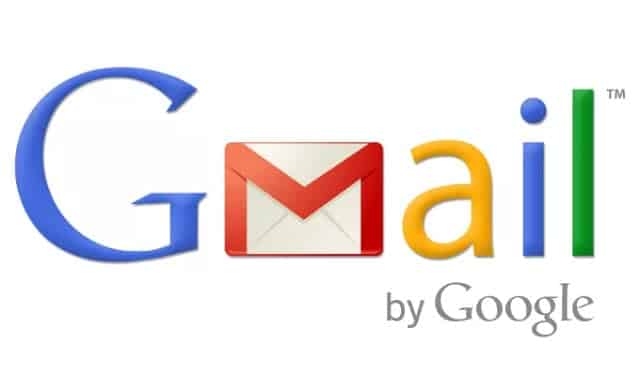
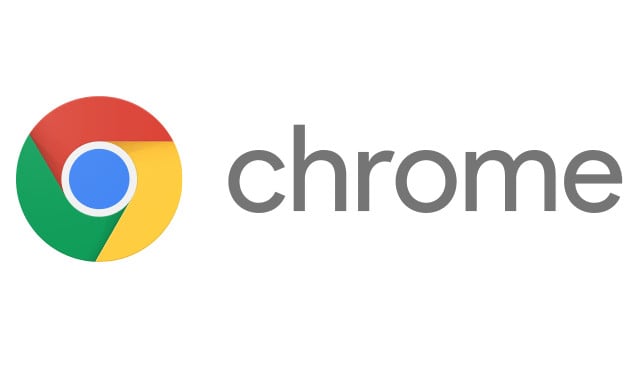
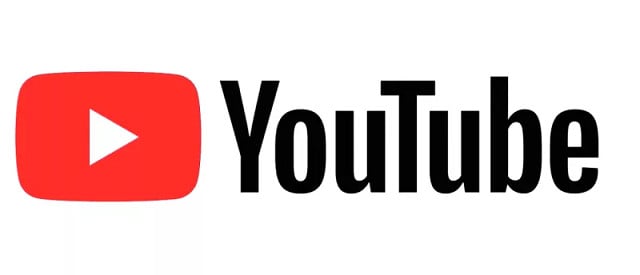
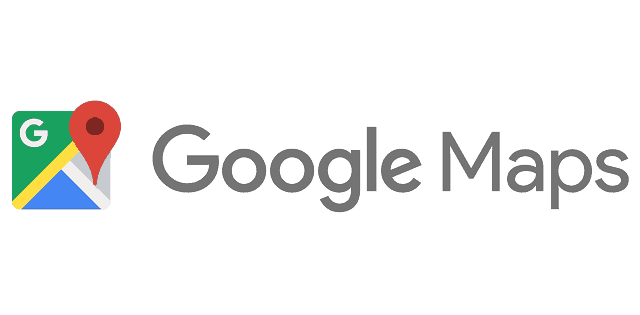
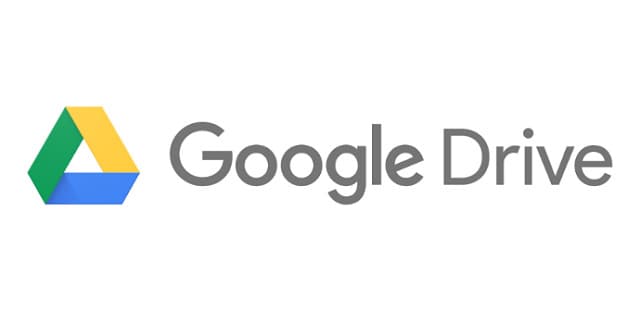

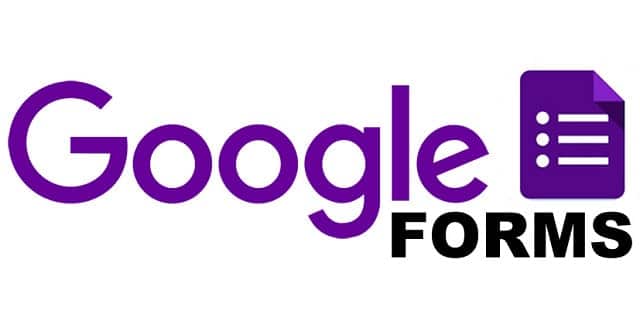


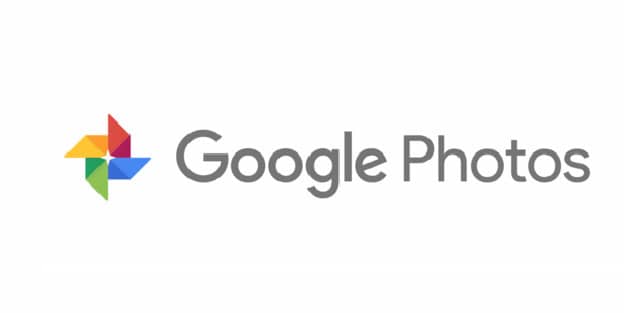
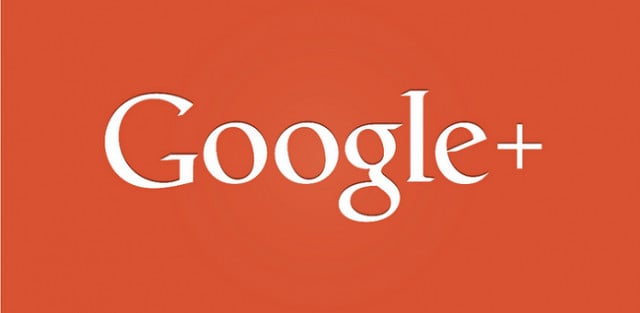







Wow! What a comprehensive list of tools! I would love to suggest another tool which we are working on- Bit.ai. Bit is also a Google Docs alternative which allows users to create rich, dynamic, and awesome looking documents, with built-in tracking and collaboration capabilities! Do check us out 🙂